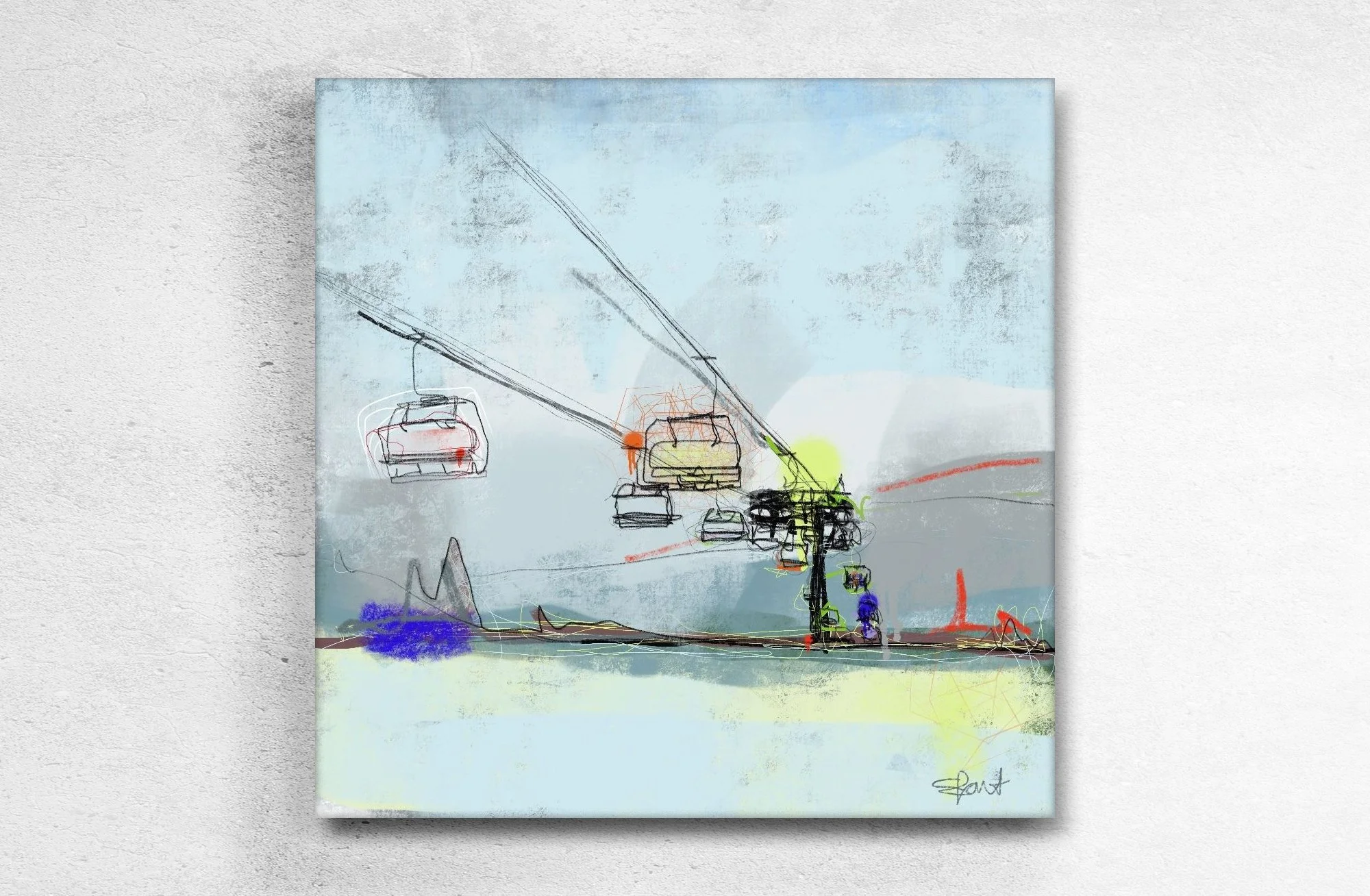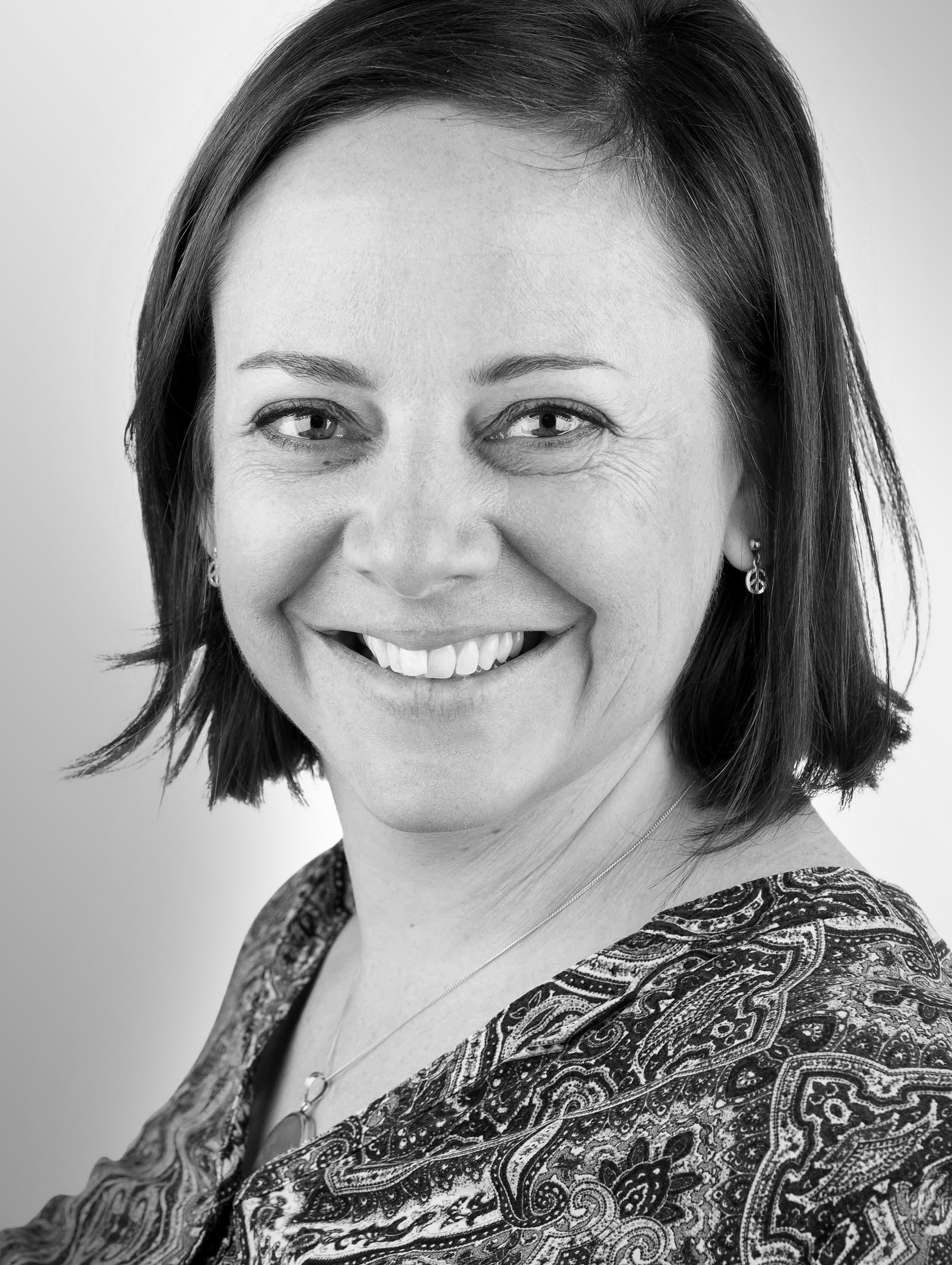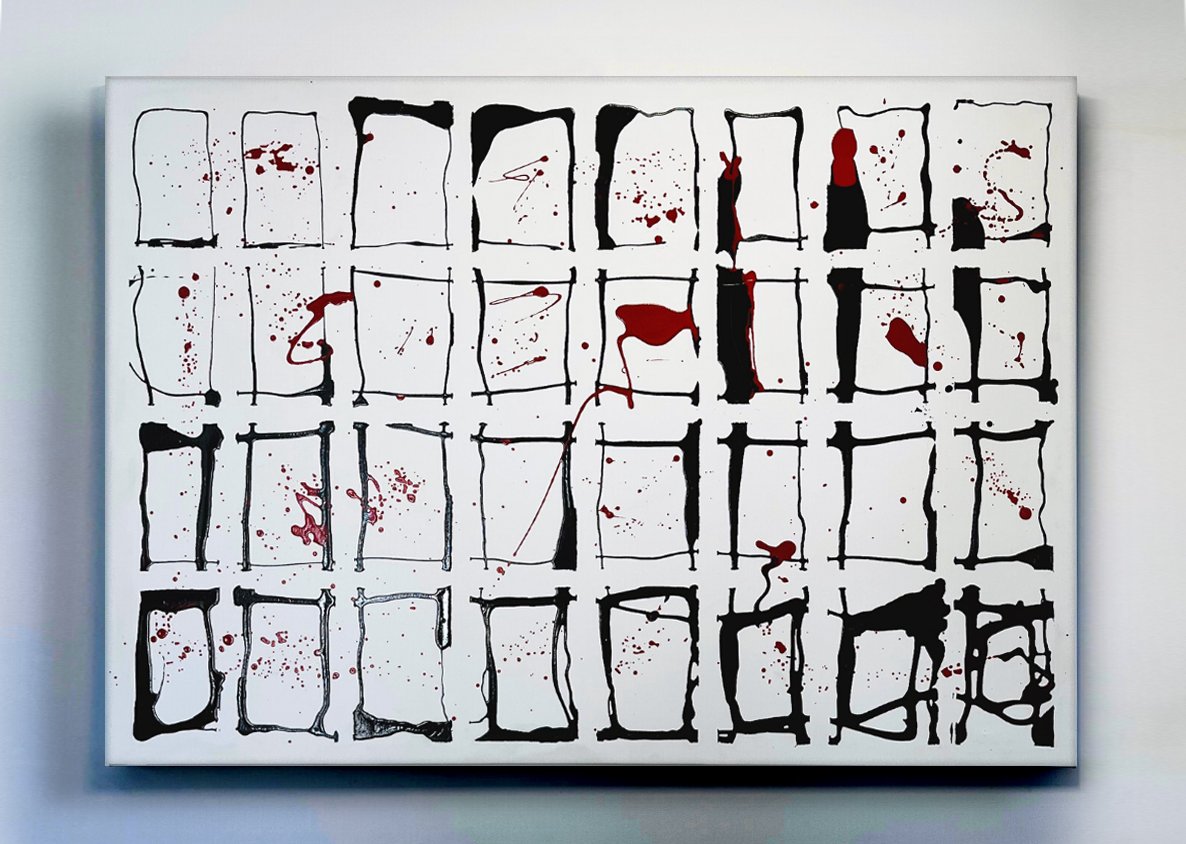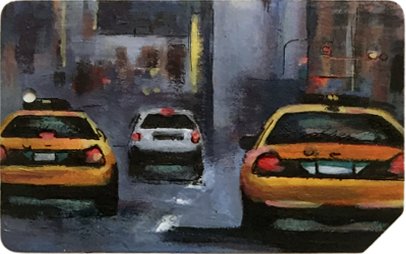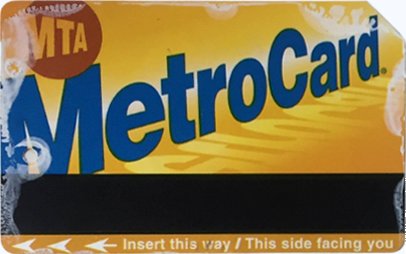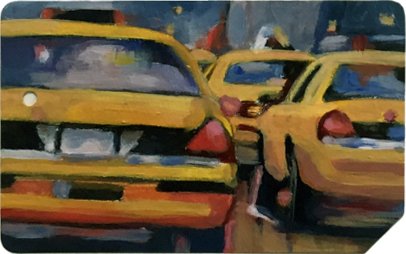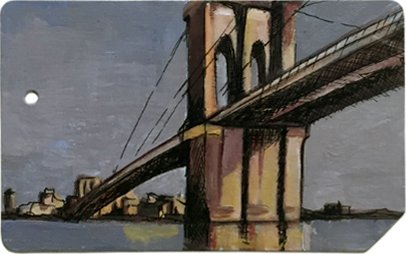Ski Lift
When you first embarked on your journey as a self-taught artist, your concept of the three C’s led you to create a series of drip paintings with house paint. What are the three C’s, and how did they help you realise that early series of work?
The three C’s are the backbone of everything I do. Creativity, curiosity and courage. They became part of my life philosophy after a major burnout in 2010. This disruptive and painful experience became an opportunity to rediscover and reinvent myself.
Creativity, curiosity and courage are key in and outside of the art studio. It’s a mindset that pushes you to do things differently, explore your curiosity and have the courage to venture into the unknown. You can’t have one without the other, at least not if you want to reap the benefits. When you apply the three C’s, even the seemingly impossible becomes possible, and I have endless stories to prove it in case you’re feeling sceptical about it. Or you can just watch my award-winning Toastmasters speech about ‘Creativity & Co’.
“Creativity & Co” speech that garnered Steph the Toastmasters International's Champion of Public Speaking in Swiss Romande and second place in Southern Europe
Coming back to your question about how the three C’s helped me in my early work? I was driven by an innate need to create and have an outlet to explore my inner world. Being a self-taught artist, it was difficult to know where to start with painting. So, I just picked up left-over cans of paint lying around my apartment and started pouring it into grid formations using masking tape. I called the series ‘Organised Chaos’. It was an exploration of my inner world and contradictions. You could say that the end result looked like a fusion of Jackson Pollock’s drip art fused with the bold black lines and primary colours of Joan Miro. I never set out to become an internationally exhibited artist, I was simply being curious, courageous and creative at exploring my emotions at the time - it was like therapy. And anyone who has been through therapy knows that you need to be courageous and curious to face that. Followed by creativity as you learn to start doing things differently.
“Organized Chaos” series
Take the Plunge III
Canadian based Belgian singer and songerwriter Nico Boestern participated in the “The 100 Faces Project”
“The 100 Faces Project”
Album Art for Igor Stravinsky
You’ve painted all your life, but your working life took you to the military and corporate world. When you returned to the artform, was it initially a calculated career shift?
The shift to a career in art was triggered by a difficult realisation during my burnout at the age of 30 when I felt like I was not fulfilling my purpose. Picking up a paintbrush and reconnecting with my passion for painting made me realise that I was an artist at heart and that my future career choices had to leverage my eye for design and visual communication. My demo reel will give you an idea of the diversity and versatility of my creative work as an artist, content creator and art director.
Now as an established artist, do you continue to use the three C’s in your art practice?
The three C’s are definitely a red thread in everything I do. I believe that amazing things happen when you actively play with the three C’s. They have become like friends who I like to hang out with. We embark on adventures together, sometimes it works out and sometimes it doesn’t. Even when it doesn’t work out, I always learn something new and useful for the next chapter. Everything leads to something, even if it doesn’t seem like it at the time. Everything that I have ever dared to create in the past has contributed to who I am today and where I’ll be tomorrow.
Take, for example, The 100 faces Project from 2013. As an artist in dire need of cash flow back then, I wanted to find a way to flip the traditional model of selling art upside down. Typically, an artist will spend a year, or even years, creating a body of work in preparation for an art show. Then, you hope that your work sells out at the show, but it might take you another couple of years to sell the entire collection. Meanwhile, how do you pay your bills?
At the same time, I was also curious about the power of art to unite people. I was already actively witnessing this through Collaborative Art® - the creative team building workshops that I had founded in 2011. I was wondering how I could apply this concept of bringing people together through art, building a sense of belonging, and at the same time solving my cash flow problems by getting paid before painting. That was the birth of ‘The 100 Faces Project’. One hundred people commissioned a portrait of themselves during a year. Every portrait painted was already paid for. The end result was a giant mosaic of one hundred portraits. At the show, we created a corkboard version of the mosaic where the ambassadors of the project could pin coloured string to show the connections that they discovered with the other ambassadors. Red for friends and family relationships, blue for geographical connections, yellow for professional connections. It was like an artistic Facebook experiment that showed the power of connection and word of mouth to make the project a success.
This project has even planted many seeds that I have reaped long after the event. I have sold more paintings, more team buildings and even licensed a portrait on the album cover of a classical music collection by Igor Stravinsky. Creativity is planting seeds, nurturing them and enjoying the unexpected places where they take you.
“NYC MetroCard” series
How has your art practice evolved?
Different chapters of life become the inspiration for the subject matter in my art. But it’s not just the theme of my art that changes over time, it is also the technique, colour palette, medium and even materials used.
In 2016, I started getting curious about how to create more sustainable art and started transforming used New York MetroCards into masterpieces and upcycling skateboards, snowboards as my canvas. In 2020, an NGO, Medicines for Malaria Venture, whose mission is to eradicate malaria in the world, approached for helping them with the creative direction of their 20th-anniversary event. After listening to their brief, I proposed to make 20 mosquito sculptures made from upcycled everyday objects that would act as conversation starters and centrepieces at their event, symbolising the containment of Malaria as they were presented trapped in plexiglass boxes on the tables.
Ultimately, if I kept on painting the same subject in the same way over and over, I would go mad from boredom. I plan to paint until the day I die, so I’d better be open and curious to try new things. Being creative is about evolving your practice, no matter what happens to spark the shift, and enjoying the pass less trod each chapter.
One of twenty upcycled object mosquito sculptures for Medicines for Malaria Venture | photo credit Edouard Venceslau
“How Diversity of Experience Fuels Creativity an Innovation” — Keynote speech at P&G
First ski lift painting made in Miami in 2017
In addition to being an accomplished artist, you’re a professional speaker, business leader, and entrepreneur. You’ve managed to apply your artistic perspective to these pursuits. Have these pursuits informed your art practice in turn, and how have effects manifested in your artwork?
Yes, I draw a lot of parallels in both directions. Generally, the keynote speeches that I give connect the world of business with the creative art-making process. You will typically hear me speak about the three C’s: creativity, curiosity and courage and how the diversity of experience fuels innovation.
Likewise in the other direction, the topics that are covered in team building, seminars and keynote speeches often become visual metaphors in my art. The two worlds, art and business, cross-pollinate with my surroundings, interests, favourite colour palette (at the time) and technique at that moment in time.
Take, for example, the abstract ski lift paintings. I created the first one whilst living in Miami in 2017. I was missing home. That’s Switzerland, even though I am originally from the UK. As I was painting in my art studio, in a part of the world where it’s flat and summer all year round, I found myself fantasising about a ‘cool’ escape to the mountains. The visual metaphor and meaning of the abstract ski paintings have developed since, but that’s how the ski paintings were born—from the emotions felt missing home.
Portrait painting in the art studio
What does your typical day involve?
Pre-covid, a typical day could be anything from networking, prospecting, designing a creative experience or team building workshop for a client, painting, visiting art exhibitions, setting up an art exhibition, packaging sold paintings to ship with DHL, or visiting museums, reading, flicking through Pinterest for inspiration, especially colour palettes.
When I paint, I usually have several paintings on the go so that I can jump between different projects, follow my instinct to work on what’s calling me that day and allow myself space to reflect on the pieces that need more rumination time. With this approach to painting, I can avoid the feeling of being stuck and stay in the creative flow.
Giant dripping painting portrait of Marilyn Monroe
With an art career spanning 20 years, the breadth of your work encompasses abstraction, pop icons, urban landscapes, animals, and more. How do you decide on a subject matter, medium, and technique?
I go with my gut and I play. That’s probably the shortest answer. I am always infatuated with something, whether it's a subject, a technique I like playing with or a colour palette. Whatever it is it usually becomes my muse until I am ready to move on to the next exploration.
As for technique, that has evolved partly through practice and partly ability at the time. Thinking back to the beginning when I didn’t know how to paint, I just poured leftover paint to create abstract paintings using the materials that were available to me. The key is to take action by approaching a canvas with a playful mindset and see what happens.
Later on, in 2007, I taught myself to paint portraits. That’s when I developed a crisscrossing technique using brushstrokes. Then in 2011, I started dripping figurative art like the giant Monroe portrait that is now hanging in a private collector’s home in Cuba. She is so big, measuring 350cm by 200cm, that when the client has his balcony doors open, Monroe watches over the pedestrians in the street below. I’ve been told that the locals have named the client's house, ‘Casa Marilyn’.
Installing "Jazz Colors" paintings in Metis Gallery, Geneva 2010
Take the Plunge III
Drip paintings in the art studio
What is the common thread that runs through your body of work?
Energy. Expression. I think that you will always find my paintings to be an expression of energy and that makes sense as I have a lot of energy! Painting is a way for me to channel all my energy and ideas. It’s actually a relief to paint. When I haven’t painted in a while, it builds up like hunger does in your stomach. The best thing is to go and paint. If I don’t know what to paint, I will just create an abstract background that will become a painting in another session.
What is your curiosity currently exploring in your art practice?
There’s usually more than one thing going on at the same time. Currently, I am playing with different series. First, the mountain and ski art. Second, are the swimmers taking the plunge. Both series are metaphorical in the message about exploring courage, freedom, uncertainty, exploring the unknown, overcoming challenges and perseverance.
The other series that I am working on is the ‘larger than life’ drip art that I like to call ‘dripscapes’. I have entered them into various Art Prizes this year in the UK, Germany and Luxembourg, let’s see how the judges respond to them.
Steph’s art studio
What new series of work do you have planned to further push your boundaries?
Aside from continuing the drip painting, which is a long and slow process, I am toying with the idea to go ‘wild’ with a series of close up, expressive, abstract floral paintings - hopefully, they’ll be ‘blooming marvellous’.
Your art practice and other professional pursuits are intimately intertwined. There is unique and magical synergy. What would your studio practice look like if the other didn’t exist, if that’s even fathomable?
That’s a really difficult question, even for someone with a strong imagination! My practice would probably be less diversified, more inward facing focussing on my inner world, perhaps purely therapeutic and less commercial. I prefer to envision forwards striving for future goals rather than imagine what might have been. I am proud of whether my path has led me so far and I am excited about what adventures it will bring tomorrow.
Painting in the art studio

